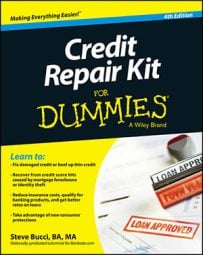Many of your major expenses — mortgage or rent, credit card bills, utilities, car loans, and so on — hit monthly. If you have an expense that occurs other than monthly, prorate it to a monthly amount. For example, a $2,000 homeowner’s insurance bill due once a year is $166.66 a month. For frequent yet varying expenses such as electricity, gather several months to a year and then determine a monthly average.
Using your checking and savings account statements, credit card statements, cash receipts for significant purchases, other financial records, and/or a financial planning program such as Quicken, enter and categorize all your expenses to figure out what you spend each month. If you don’t have complete financial records, don’t worry — just use your best estimates to fill in the blanks.
| Expense | Planned | Actual | Difference |
|---|---|---|---|
| Rent/mortgage | |||
| Property taxes | |||
| Renters/homeowners insurance | |||
| Home maintenance | |||
| Water | |||
| Sewer | |||
| Garbage | |||
| Gas/oil for heating | |||
| Electricity | |||
| Telephone | |||
| Car payment | |||
| Car insurance | |||
| Gasoline | |||
| Car repairs/maintenance | |||
| Clothing | |||
| Groceries/household supplies | |||
| Doctor/dentist | |||
| Prescriptions | |||
| Health insurance | |||
| Life/disability insurance | |||
| Childcare | |||
| Tuition/school expenses | |||
| Child support/alimony | |||
| Personal allowance (small, out-of-pocket expenses) | |||
| Entertainment | |||
| Eating out/vending | |||
| Cigarettes/alcohol | |||
| Newspapers/magazines | |||
| Hobbies/clubs/sports | |||
| Gifts | |||
| Donations | |||
| Work expenses | |||
| Cable/satellite TV | |||
| Internet service | |||
| Cellphone | |||
| Student loans | |||
| Pet/veterinary expenses | |||
| Other: | |||
| Other: | |||
| Total Expenses | $ | $ | $ |
If you’re like most people, you’ll be able to account for around 80 to 90 percent of where your money is spent. But you’re likely to find that a fraction of your income seems to vanish into parts unknown. You may be able to save in some of these areas if you decide that you’d rather consciously reallocate the money or reallocate the expense to personal allowance:
-
Allowances: Your kids won’t like this, but you don’t have to give them set allowances.
-
Bank fees: There is no reason to pay fees for a checking account if you take the time to shop around.
-
Babysitting: See if you can work out a deal with friends or neighbors to watch their kids one day in exchange for them watching yours the next.
-
Salon: Instead of going to a high-priced salon, look for a beauty school in your area. You may be able to get your hair done for free (or for a nominal charge).
-
Beer, wine, and soda: For some people, giving up brewskis, a favorite cabernet, or soft drinks may seem like a real hardship. But when you add up how much money you’re spending, it may be enough of a motivation to cut.
-
Fast food and vending machines: Shop at the grocery store instead; use coupons for amazing savings.
-
Books, magazines, newspapers, CDs, and movies: One of the greatest resources at your disposal is your public library. All you want — free of charge.
-
Car washes: Do it yourself or toss a sponge, some soap, and the hose at your kids and set them loose.
-
Lottery tickets and other forms of gambling: A dollar in the bank is much more valuable than a dollar spent gambling.
-
School fundraisers: Just say no. If you want to help your local school, you can volunteer at the library, coach a sports team, or lead a scouting troop.
-
Entertainment (concerts, movies, sporting events, and so on): Look for ways to entertain yourself and your family free of charge.
-
Health foods: Eating healthfully is important, but health foods can be pricey. Shop the produce department of your grocery store, stick to whole grains and lean meats, and your spending plan will be fine.
-
Hobbies: Most hobbies cost money, and although they’re fun, so is saving money.
-
Eating out: Even if you’re eating at fast-food restaurants, eating out costs a lot. You can save big money by preparing your food at home.
-
Pets: If you’re in financial trouble, getting a new pet isn’t a good idea. Even healthy pets cost money, and if your pet gets sick, you’re in for more expenses. If you already have pets, stick to the necessities (food, vaccinations, hugs) and avoid store-bought toys.
-
Tobacco: You already know that you shouldn’t be smoking.
-
Yard sales: Wash the car instead. Most people think that they’re getting bargains, but they usually end up buying things they don’t really need.
You don’t have to cut all these items out of your life. Just be aware that you’re spending discretionary money and consider how important each item really is.
To identify that last 10 to 20 percent of expenses, track your daily expenditures. Record all those cash expenses that are such a part of your routine that you hardly notice them — the morning paper, coffee, snacks, and so on.The really good news about this tracking is that you need to do it for only two months to catch almost everything. After that you’ll have a good handle on what’s gobbling up your extra cash, and you can either plug the hole or include it as an expense in your budget.

